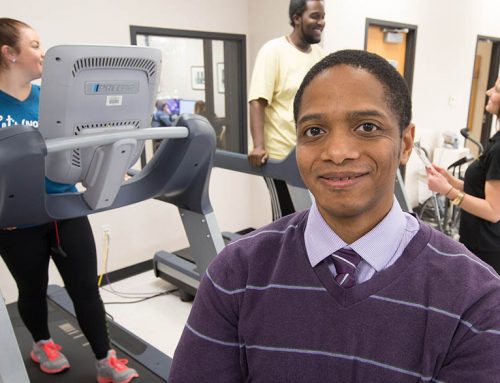Exercise is an important part of a healthy lifestyle. Exercise prevents health problems, builds strength, boosts energy, and can help you reduce stress. It can also help you maintain a healthy body weight and curb your appetite.
Path to improved health
Adding exercise to your routine can positively affect your life.
Exercise can:
- Reduce your risk of heart disease, high blood pressure, osteoporosis, diabetes, and obesity.
- Keep joints, tendons, and ligaments flexible, which makes it easier to move around and decreases your chance of falling.
- Reduce some of the effects of aging, especially the discomfort of osteoarthritis.
- Contribute to mental well-being and help treat depression.
- Help relieve stress and anxiety.
- Increase energy and endurance.
- Improve sleep.
- Help maintain a normal weight by increasing your metabolism (the rate you burn calories).
Can anyone exercise?
Everyone can benefit from physical activity. For most people, it is possible to begin exercising on your own at a slow pace. If you have never exercised before, start with a 10-minute period of light exercise. A brisk walk every day is a good first exercise. Slowly increase how hard you exercise and for how long.
Talk to your doctor before starting an exercise program. This is especially important if your doctor is already monitoring you for a health problem, such as heart disease or osteoarthritis. You should try to exercise even if you have a physical disability that limits movement. Your doctor can help you find other exercises to improve your overall health.
How much exercise do I need?
A good goal is to exercise 5 times a week for at least 30 minutes each time. However, most people need to start gradually. Start by exercising 2 or 3 times a week for 20 minutes at a time. Once you feel comfortable, slowly increase the amount of time and the number of days a week that you exercise.
How hard do I have to exercise to gain health benefits?
Even small amounts of exercise are better than none at all. Start with an activity you enjoy and can do comfortably. Learn to take your pulse and calculate your target heart rate (about 80% of your “maximum heart rate”). As you become used to exercising, try to exercise within your target heart rate zone so that you get the most benefit.
To take your pulse, gently rest 2 fingers on the side of your neck, about halfway between your ear and your chin. Count the beats for 10 seconds. Multiply this number by 6 to get the number of beats per minute. For example, if you are sitting still and count 12 beats over 10 seconds, multiply 12 x 6 to get 72 beats per minute.
To figure out your target heart rate, subtract your age (in years) from 220. This is your maximum heart rate. To calculate your target heart rate, multiply that number by 0.80.
For example, if you are 40 years of age, subtract 40 from 220, which gives you a maximum heart rate of 180 (220 – 40 = 180). Then multiply this number by 0.80, which gives 144 (180 x 0.80 =144). Your target heart rate would be 144 beats per minute.
Track your progress
Keep a record of your workouts to track your progress. Write down how long you exercised and what you did. Free websites are available to track your progress, as well as apps for smartphones.
Find an exercise partner
Working out with a friend is more fun than working out alone. An exercise buddy can keep you motivated when you don’t feel like exercising. You will be much less likely to cancel exercise if you know someone is counting on you to be there. And when you reach your exercise goals, you’ll have someone to celebrate with.
Things to consider
To avoid injuring yourself during exercise, don’t try to do too much too soon. Start with an activity that is fairly easy for you, such as walking. Do it for a few minutes a day, several times a day. Slowly increase the amount of time and the intensity of the activity. For example, increase your walking time and speed over several weeks.
Trying to push yourself too hard in the beginning could cause muscle strain or sprain. When this happens, you’ll have to wait for the injury to heal before continuing your exercise program. This can really sidetrack your health goals.
When to see a doctor
Pay attention to your body. Stop exercising if you feel very out of breath, dizzy, faint, nauseous, or if you feel pain. Talk with your family doctor if you have questions or think you have injured yourself seriously.
Questions to ask your doctor
- Am I healthy enough to begin an exercise program?
- Are there any exercises I should avoid?
- Do I have any health condition that would affect my ability to exercise?
- Am I taking any medication that would interfere with exercise?
Resources
Centers for Disease Control and Prevention, Physical Activity
National Heart, Lung, and Blood Institute, Guide to Physical Activity





Leave a Reply